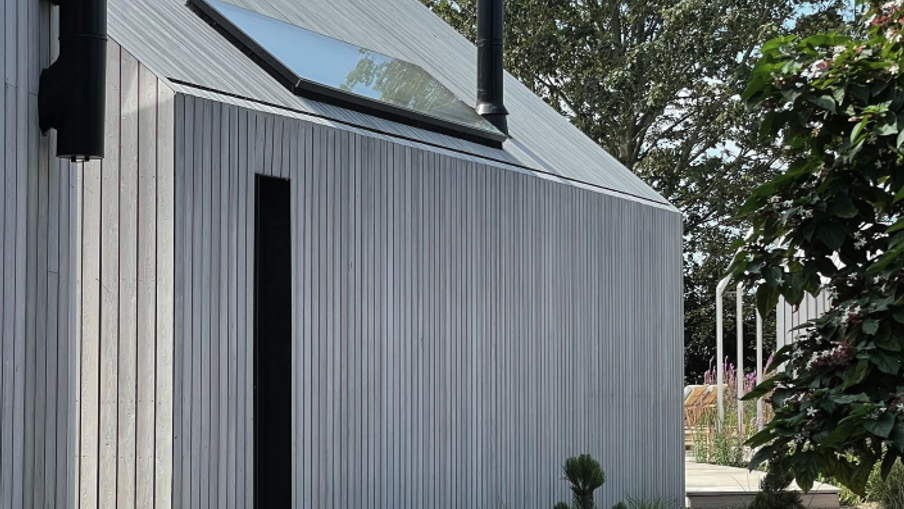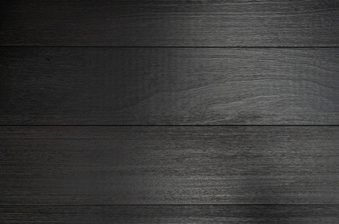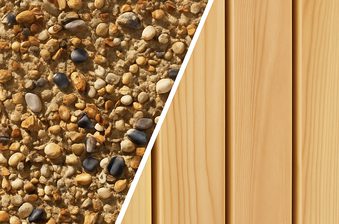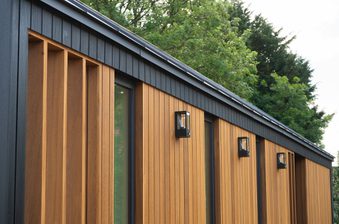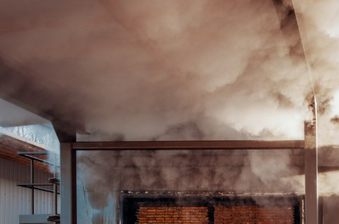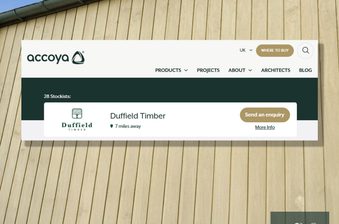Whatever project you’re working on, pre-finished timber helps you to achieve a beautiful, long-lasting, professional and functional finish – with no mess or hassle.
Much more than just a lick of paint from your local DIY store, these treatments are state-of-the-art and specially developed to keep your timber cladding looking and performing at its best for as long as possible. They can also be specified for projects required to meet certain building material standards.
What is pre-finished timber?
As is probably abundantly clear from the name, pre-finished timber (often referred to as pre-coated, factory-coated or pre-painted) is wood that has had protection professionally applied during the manufacturing process before delivery to a customer.
There are many types of factory treatment. Take SiOO:X, for example. This popular, innovative wood modification system makes use of non-toxic silicon nanotechnology to form a protective barrier and alter the wood’s appearance.
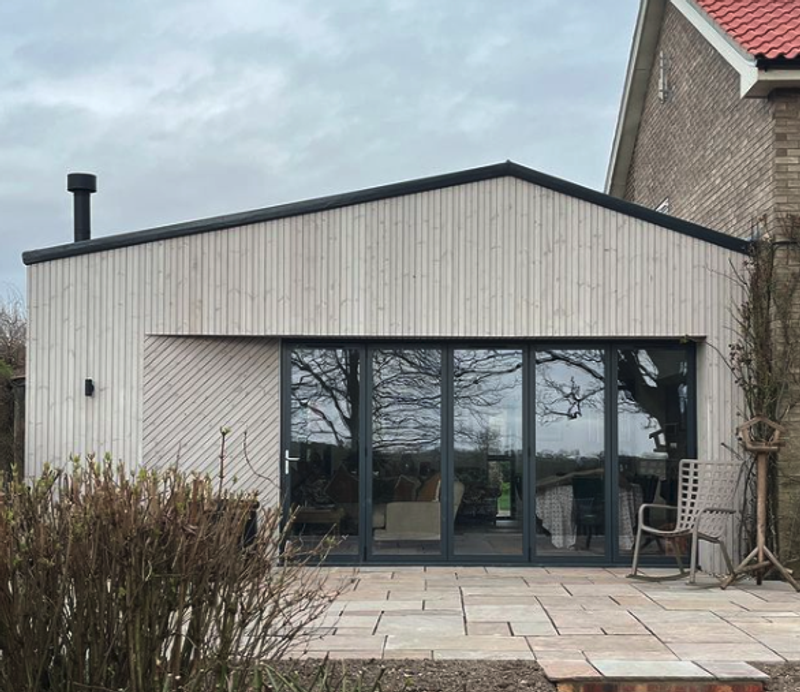
Another on-trend factory treatment is the ‘charred look’ – as seen in our Chartex® range.
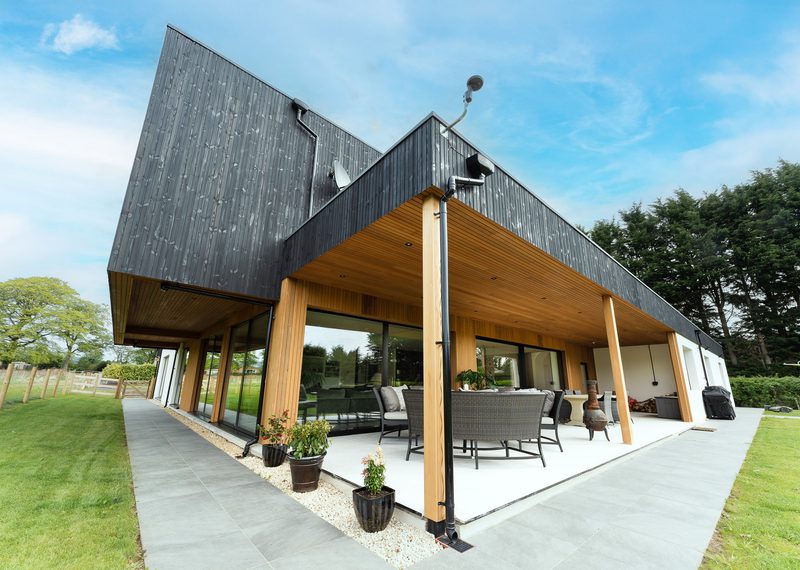
Teknoclad is another popular solution for coated cladded – as seen here in this project for Studio Elephant, a leading architect.
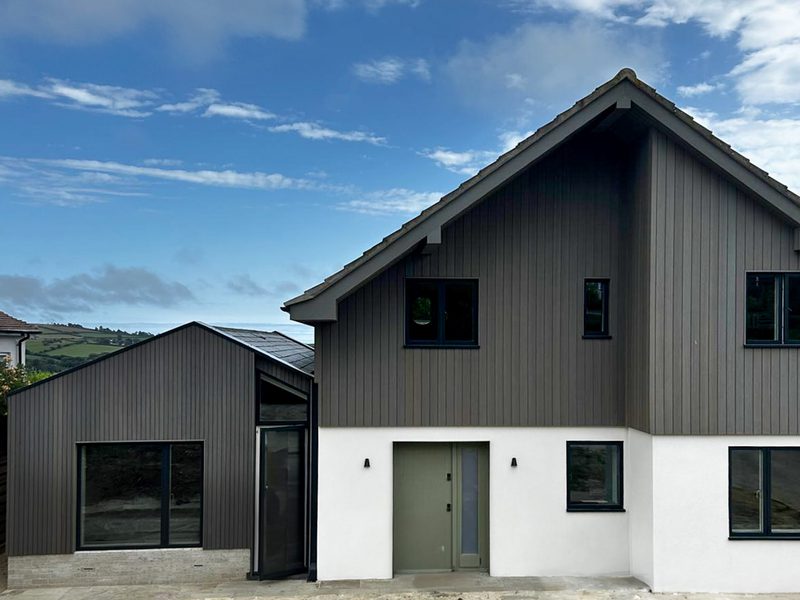
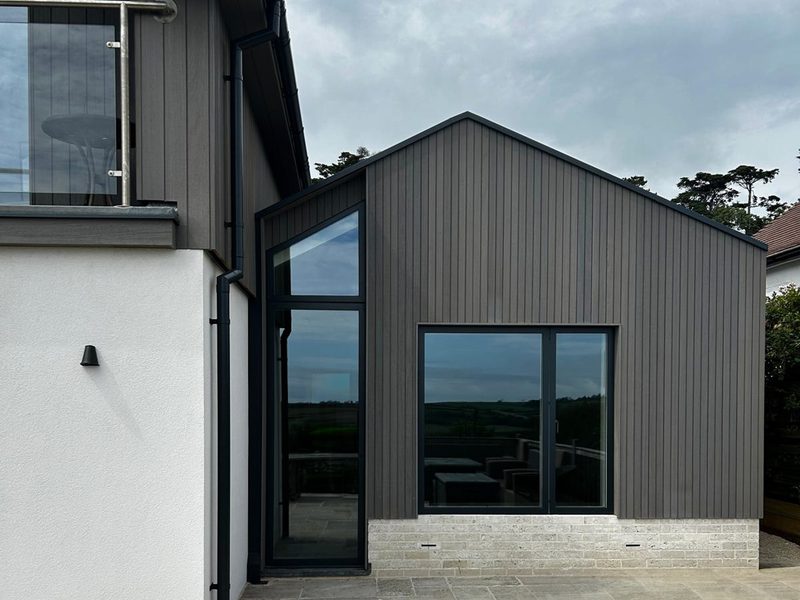
Some types of factory treatment are predominantly clear – they don't really change how the wood looks, but boost its outdoor performance and keeps it looking like new for longer.

Other types of factory treatment include those that are predominantly functional, such as fire retardants. At St. Mary’s Catholic Voluntary Academy – a project we recently provided Western Red Cedar shadow gap secret nail cladding for – the cladding was modified with a non-toxic, natural treatment so it meets BS EN 13501-1 fire classification.
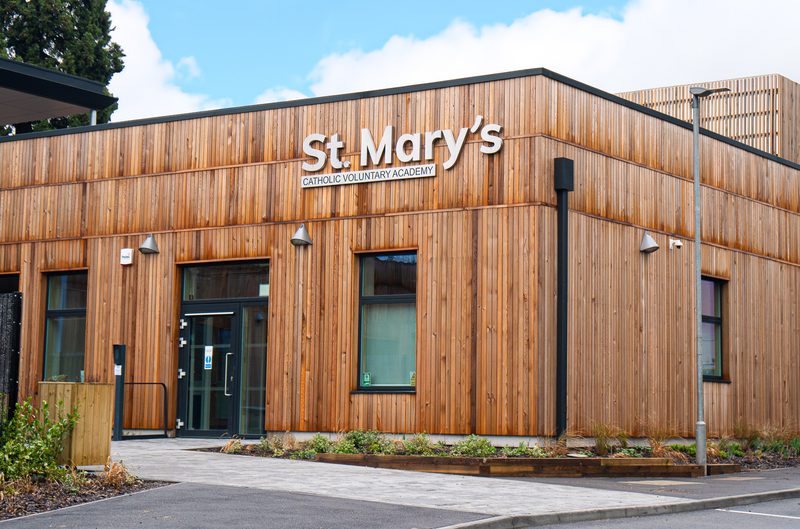
The timber pre-treatment process: how it works
The treatments are applied to kiln-dried timber (with less than 20% moisture content) in a controlled environment, to achieve optimum impregnation of the product. By using equipment such as bespoke vacuum coaters, factory treatment ensures optimum application rate.
With SiOO:X, two wood protection coats are applied before the final surface protection coat. Treatment is applied to all sides of the timber — including all edges, end grains and tongue and groove details — ensuring full envelope protection.
Application is best on 60 grit sanded sawn surfaces (not planed surfaces), with glaze removal sometimes necessary. Different products can be applied depending on which part of the timber is being treated for maximum protection (for example, end grain sealer for any sawn ends).
After treatment, the wood should be sprayed with water to start the curing period. During this time, the timber should be allowed to stand on a drying rack in a dry environment that’s at least 10°C.
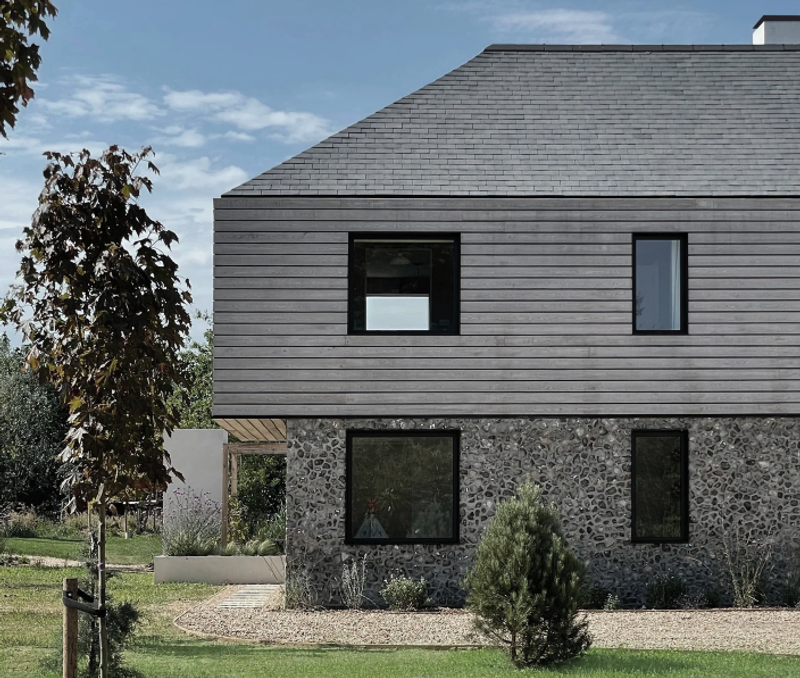
Some of the most popular types of wood for factory pre-treatment are heat-treated woods, like Thermo-Pine, Thermo-Ayous and Thermo-Tulipwood. These modified timbers take up the treatments very well, requiring half the amount of product typically required.
If you’re looking for that on-trend silvery-grey finish, these types of wood also have relatively quick curing and colour changes times – around three to four months.
Other popular species are also suitable for factory pre-treatment, like Western Red Cedar, Siberian Larch, Douglas Fir and European Oak. These can take six to 12 months to attain those celebrated silvery-grey hues.
Timber pre-treatments: popular finish options and colours
There are a huge range of finishes available for timber, allowing DIYers, architects and specifiers to enhance the appearance and outdoor performance of their timber.
Some are primarily concerned with aesthetics – such as the trend for grey or black timber – but others are more functional, such as fire retardant treatments.
1. Silvery-grey
The grayscale silvery-grey ‘old’ look is wildly popular amongst designers, particularly for its rustic aesthetic appeal – the natural ‘weathered’ look is a hot favourite for those seeking to create a minimalist, Scandi-inspired outdoor theme.
One popular way of achieving this is with SiOO:X’s two-part wood surface impregnation and protection system. Once the treated wood is exposed to moisture, the silicate reacts with carbon in the atmosphere and begins to cure, forming a network of crystals.
SiOO:X offers two types of finish for achieving the popular grey look: light grey and mid grey. Both produce an even, natural ‘weathered’ grey look after 6-8 months of UV contact.
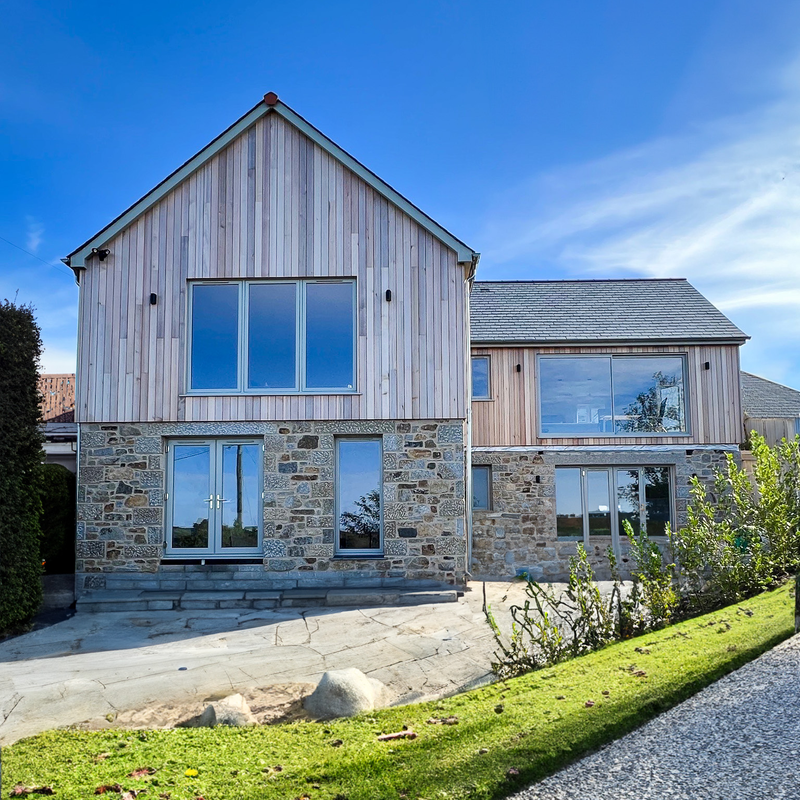
Cladding with SiOO:X pre-treatment in light grey.
As well as their popular grey look products, SiOO:X also offer a clear option, which protects the wood whilst delivering a soft, even coating which eventually silvers off after a 3-4 month period.
2. Clear
A professional factory finish using a non-film forming industrial product like Owatrol SI 106 – containing UV absorbing transoxide pigments – will saturate, seal and stabilise the wood, protecting it from warping and cracking caused by the sun and moisture.
This dramatically extends its service life whilst accentuating the natural beauty of the wood.
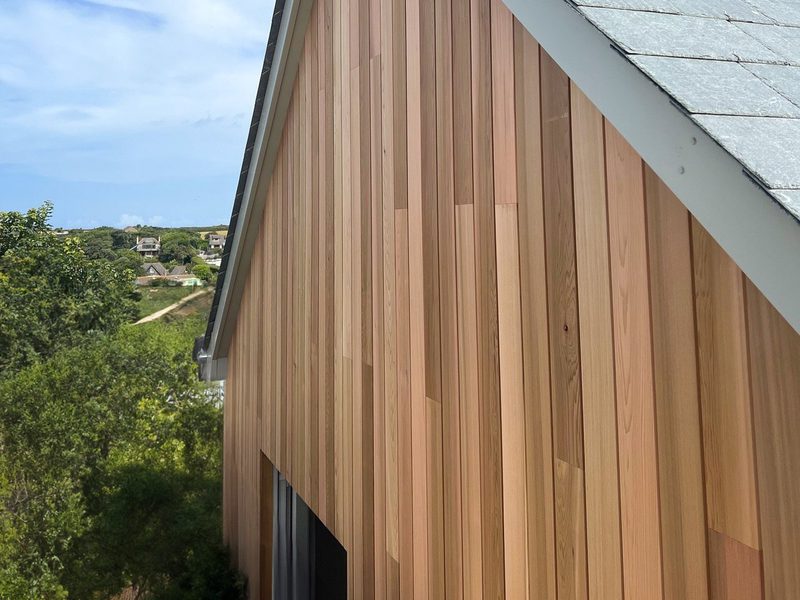
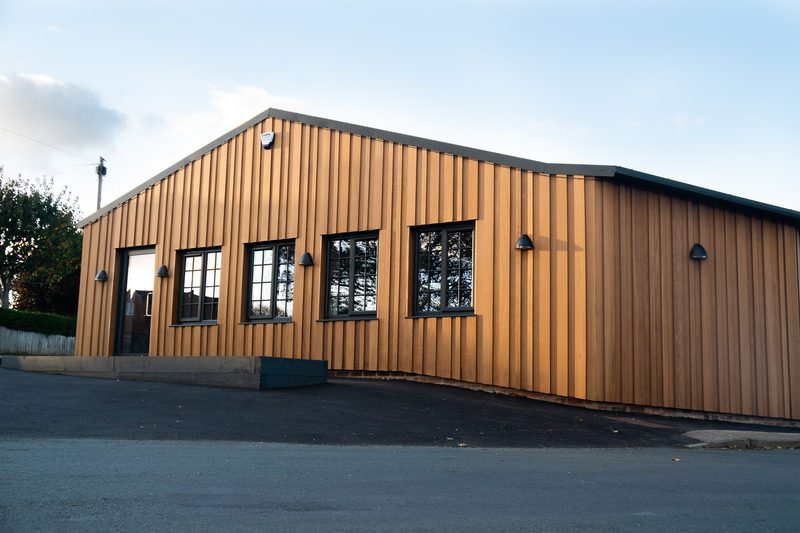
3. Semi-transparent
Semi-transparent (or translucent) finishes cover a huge range of different tints and shades, each providing a slight change in appearance depending on the treatment chosen.
Delivering enhanced performance and durability, they protect your timber from the effects of moisture, ultraviolet light and decay-causing fungi, all of which can cause cracking and warping over time. They can help the wood’s grain pattern to ‘pop’.
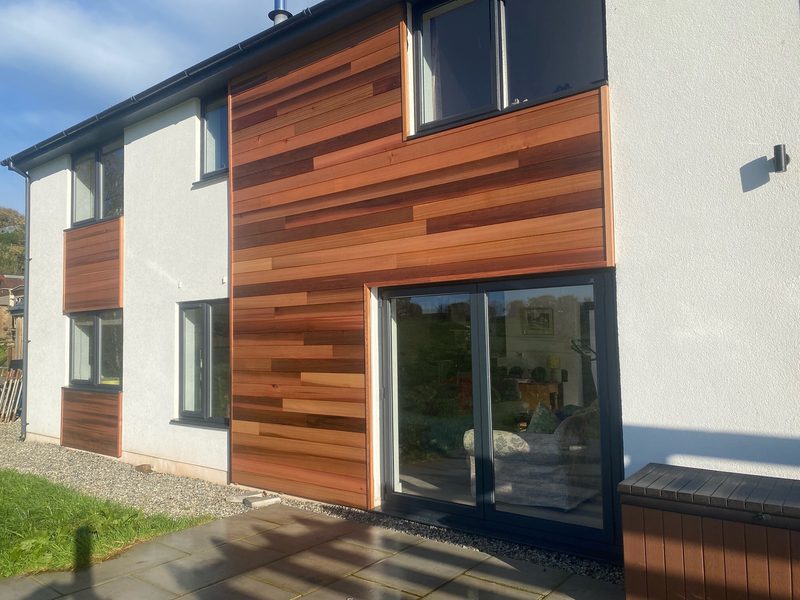
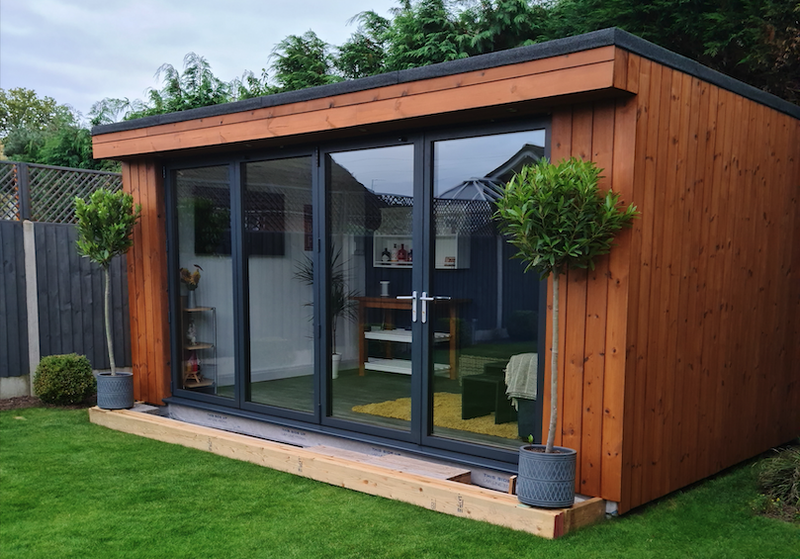
4. Solid colours
The ultimate way to take control over the finished look of your project. Opaque factory coatings give you the freedom to choose a solid, consistent and uniform colour for your wood to match your vision.
Colour possibilities are endless – as this RAL 5014 Thermo-Ayous featheredge cladding project we recently worked on shows. These finishes provide fantastic durability to the treated timber whilst totally transforming the look.
Charcoal and off-black smoke are two other striking, on-trend choices.
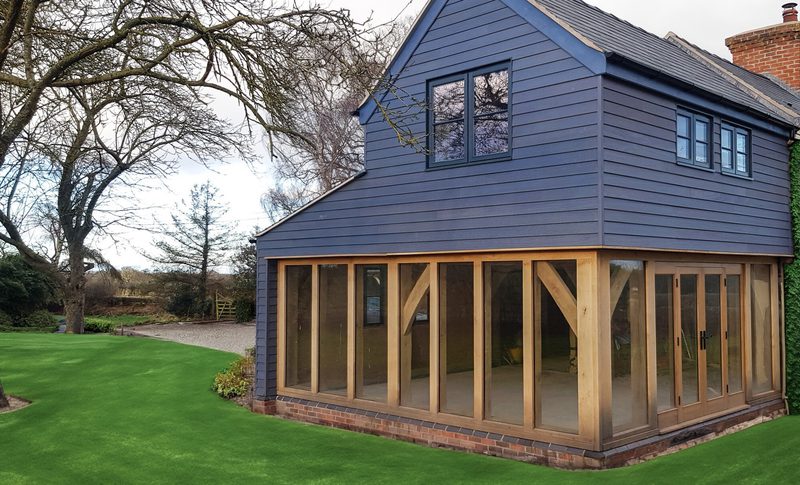
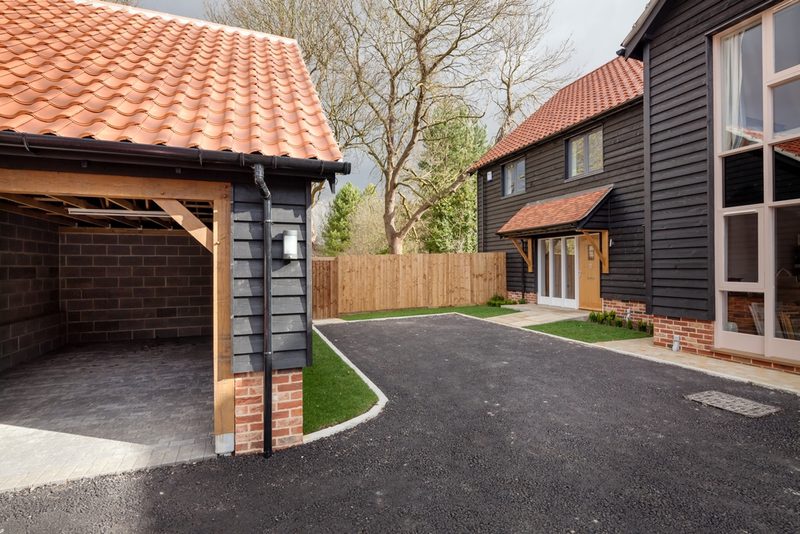
Explore our Colourflex® range to discover the range of designer colours available!
5. Charred look
The uncompromising, daring look of dark cladding can be taken up a notch with a ‘charred look’ product.
As the name suggests, the timber gives the impression of having been burned. In reality, it is created by wire brushing and coating with black stain.
A style that originated in Japan as a way of preserving the wood (Yakisugi), this dark exterior look is associated with the Nordic countries and is particularly popular for designer outbuildings and house builds. Take a look at our Chartex® range to learn more!
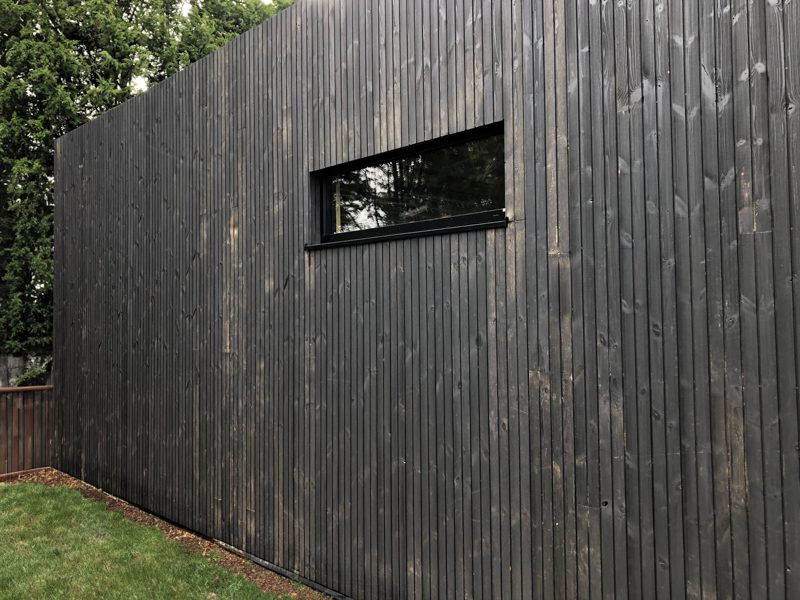
6. Fire retardants (and other bespoke systems)
Predominantly functional finishes like fire retardants are increasingly specified, particularly for commercial buildings – a great example being St. Mary’s Catholic Voluntary Academy.
These woods can meet a number of standards, including the EN 13501-1 fire classification of construction products and building elements. The Western Red Cedar cladding we supplied for St Mary’s is rated b, s1-d0 on the Euroclass system.


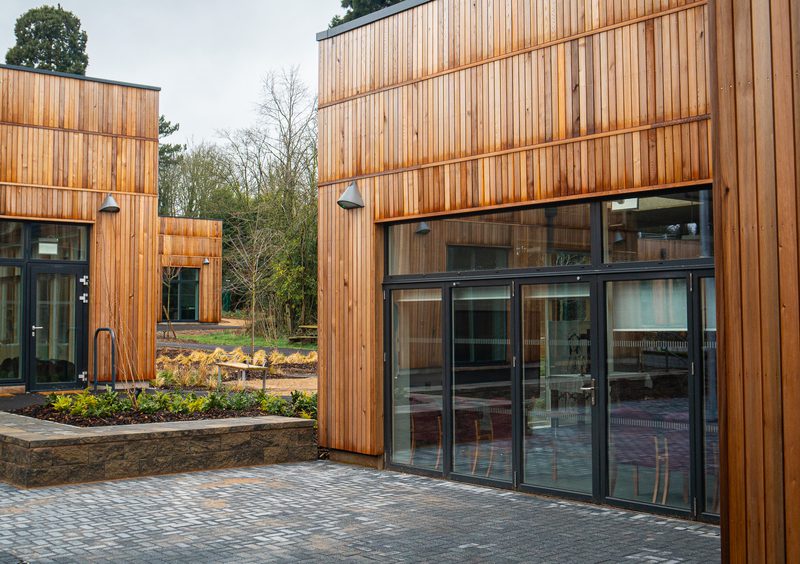
What are the benefits of factory-coated timber?
A professional factory finishes ensures optimum production quality and production control. Some projects can also be required to meet conformance standards that only a factory finish can achieve thanks to the controlled nature of the environment. There’s no risk of coating failure.
Then there’s the fact a factory finish guarantees high performance and a longer service life. The treatments are high-spec products only available to approved customers. They provide a protective envelope that reinforces and strengthens the wood, shielding against ultraviolet light, moisture and rot-causing fungi.
Another undeniable benefit is that it’s quicker and more convenient. DIY treatment can be a messy, time-consuming process, especially when working on larger projects. Weather conditions can be challenging, with moisture enhancing the risk of coating failure. Factory treatment guarantees you aren’t at the mercy of the elements and that deadlines are met.
With such a range of colours and shades available, you also have full customisation and the power to take full control of the finished look of your project.
One downside to pre-treatments are added costs – you may typically have to pay an extra £25 per m², with an additional two-to-three weeks to your project as a rule. This should be balanced against the higher performance and longer service life you’ll stand to gain.
Start your treated timber project today
If you think a professional factory finish would be the best option for your next project, there’s no better time than the present to get started.
Our quality timber cladding and fencing – available in a range of beautiful species, all machined to profile by us – can be factory finished before delivery.
Popular pre-treatment finishes include SiOO:X, Chartex® ‘charred look’, Colourflex® UX protection and bespoke coating systems, including fire retardant treatments.
Get in touch today
